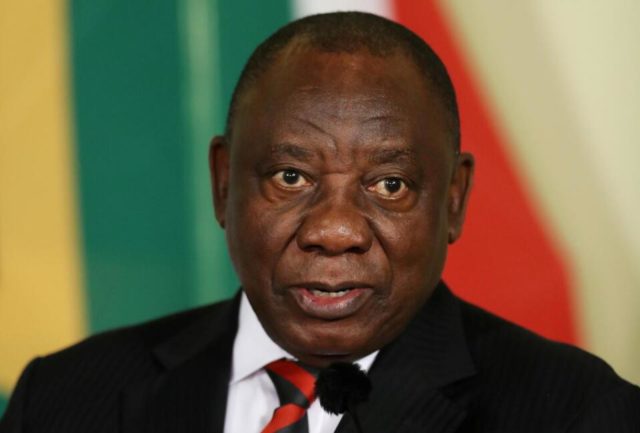But did not give details as to how Eskom planned to achieve this.
Eskom will work to stabilise the national power grid by
the end of March in the wake of the country’s most severe
blackouts in a decade, President Cyril Ramaphosa said on
Wednesday.
A week of heavy rains across parts of South Africa has
caused flooding, leading to evacuations and aggravating problems
at the cash-strapped and indebted power company, which has been
struggling to keep the lights on since 2008.
Ramaphosa, who cut short a state visit to Egypt as the power
crisis deepened, met with Eskom’s management and board on
Wednesday as mines forced to halt operations earlier in the week
reopened.
“Management has given us an assurance that they are trying
to stabilise the system,” he told a press briefing following the
meeting.
“Going right through March, they will be seeking to do
everything they can to restore the stability of the network,” he
said without giving details on how Eskom plans to achieve this.
He added that public enterprises and energy ministers would
bring proposals before cabinet on Friday aimed at closing South
Africa’s energy gap.
Potential sabotage at Eskom power stations was responsible
for 2,000 megawatts (MW) of lost capacity and needed to be
investigated, he said.
Eskom earlier announced it planned to reduce national grid
supplies by 2,000 MW on Wednesday, down from a 6,000 MW
reduction on Monday. But the company added that the probability
for continued loadshedding, or planned rolling blackouts,
“remained high for the rest of the week”.
“PERFECT STORM”
Chief Operations Officer Jan Oberholzer told Reuters the
power cuts earlier in the week were caused by a “perfect storm”
of extreme rainfall and breakdowns at coal-fired power plants.
One coal mine and three power stations had flooded, he said.
Breakdowns were occurring across Eskom’s coal-fired plants
because previous managers had not done critical mid-life
maintenance, he added.
The breakdowns were likely to persist as Eskom has neither
the spare generating capacity nor the money to take all of the
faulty coal units off-line and overhaul them, Oberholzer said.
The power cuts, which have disrupted the supply of
electricity to businesses and households across South Africa,
dealt a further blow to an economy already teetering on the
brink of recession.
In the short run, a combination of drier weather and work
places shutting down for Christmas will cool demand for power,
relieving pressure on the grid, said Azar Jammine, director of
South Africa-based consultancy Econometrix.
But he added: “It has created a lot of uncertainty over
whether we can rely on energy security in South Africa, and that
in itself is going to damage economic growth.”
State-owned companies have been a
major headache for Ramaphosa who came to power nearly two years
ago vowing to reverse years of mismanagement and economic
stagnation.
On Monday, he vowed to take “drastic” steps if necessary to
ensure their survival.
South African Airways was placed in bankruptcy protection
last week and an independent administrator was appointed to run Prasa on Monday.
But loss-making Eskom, which generates more than 90% of the
country’s power, is the “most serious risk” to the economy, the
Treasury says. This is largely because of its 500 billion rand
of debt, mostly government-backed.
Credit rating agency Moody’s has said Eskom’s troubles
endanger South Africa’s only surviving investment-grade rating.








